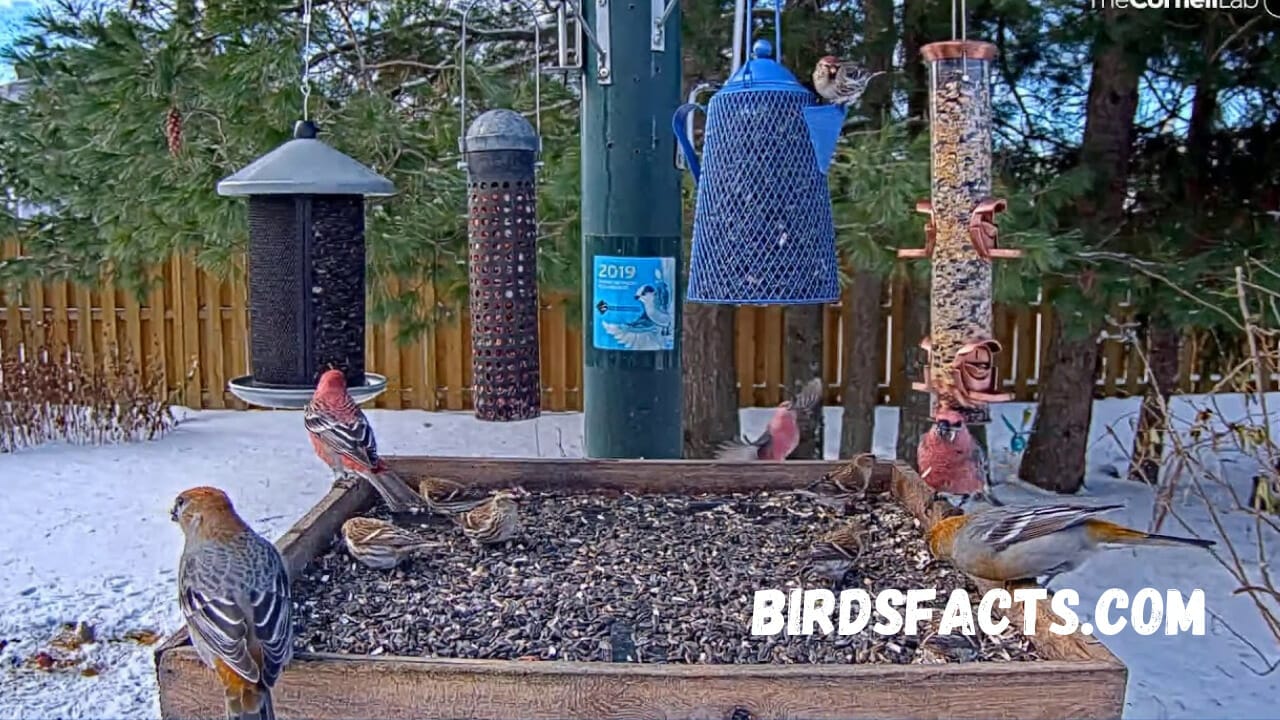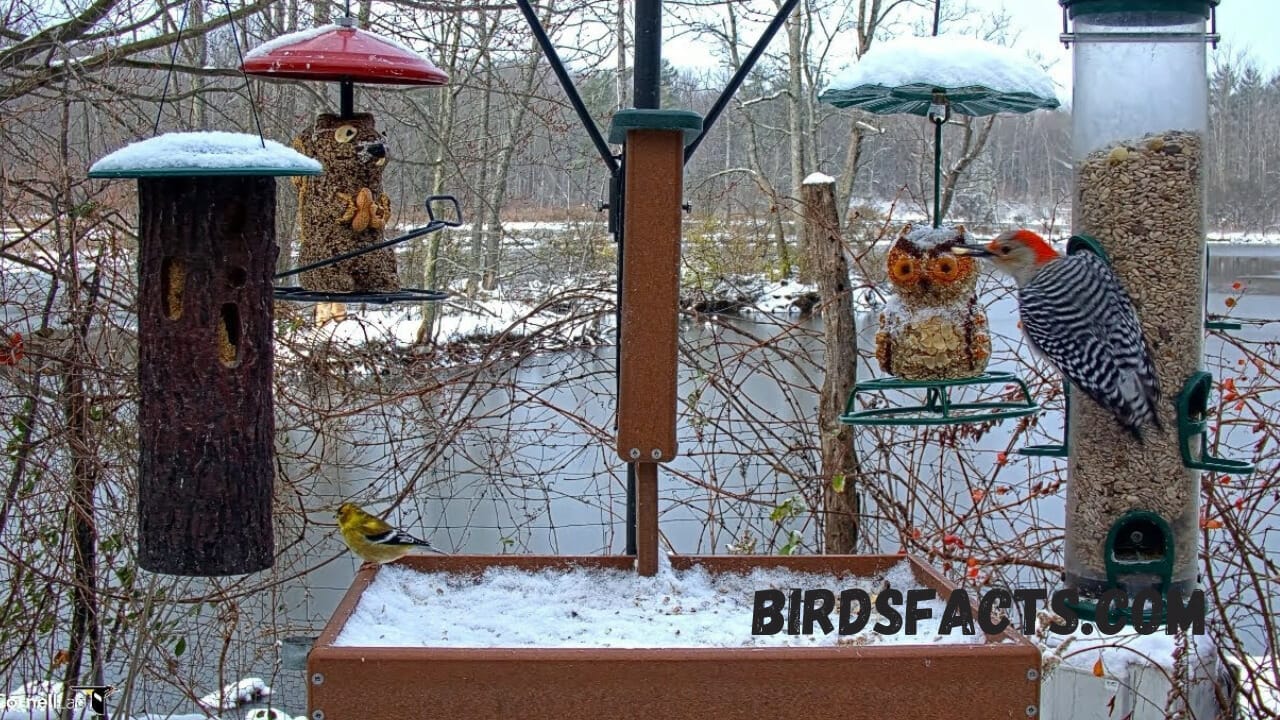The Cornell Bird Feeder Cam is a live-streaming camera that captures the feeding habits of birds in their natural habitat. This innovative technology has revolutionized how we Observe birds and has made it Possible to study their behavior in real time.

Cornell Bird Feeder Cam A Window Into the World of Birds
Cornell Bird Feeder Cam A Window Into the World of Birds
History of Cornell Bird Feeder Cam
The Cornell Bird Feeder Cam was first introduced in 2009 as Part of the Cornell Lab of Ornithology’s mission to study birds and their habitats. The camera was installed in a wooded area in Ithaca, New York, Where it was set up to capture the feeding habits of birds at a bird feeder.
How Does It Work?
The Cornell Bird Feeder Cam is a high-resolution camera Mounted near a bird feeder. The camera captures the activity at the feeder and streams the footage live online. The camera is equipped with infrared Light, which allows it to capture images even in low-light conditions.
Benefits of the Cornell Bird Feeder Cam
The Cornell Bird Feeder Cam has many benefits, Including:
- Education
The Cornell Bird Feeder Cam is a valuable Educational tool that can be used to teach children and adults about birds and their behavior. Watching the birds feed and interact with each other is a Fascinating and engaging way to learn about the natural world.
- Research
The Cornell Bird Feeder Cam has provided Researchers with much information about bird behavior. By studying the footage captured by the camera, researchers have gained insight into the Feeding habits of birds and how they interact with each other.
- Entertainment
The Cornell Bird Feeder Cam is a source Of entertainment for bird lovers worldwide. Watching the birds feed and interact with each other is a relaxing and enjoyable way to pass the time.

Cornell Bird Feeder Cam
What Birds Can You See on the Cornell Bird Feeder Cam?
The Cornell Bird Feeder Cam is located in a Wooded area in Ithaca, New York, home to a wide variety of birds. Some of the birds that can be seen on the camera include:
- Blue Jays
- Cardinals
- Chickadees
- Goldfinches
- House Finches
- Red-bellied Woodpeckers
- Tufted Titmice
Tips for Watching the Cornell Bird Feeder Cam
If you’re planning to watch the Cornell Bird Feeder Cam, here are some tips to help you get the most out of your experience:
- Choose the Right Time
The best time to watch the Cornell Bird Feeder Cam is during the early morning or late afternoon when the birds are most active.
- Be Patient
Watching the Cornell Bird Feeder Cam requires Patience. Birds are unpredictable, and it may take some time to see the bird you’re looking for.
- Use Binoculars
Using binoculars can enhance Your viewing Experience and allow you to see the birds up close.
- Keep a Bird Journal
Keeping a bird journal is a fun and educational way to document your observations and learn more about the birds in your area.

cornell live bird feeder cam
Sapsucker Woods Bird Cam
The Sapsucker Woods Bird Cam is Another live-streaming camera that captures bird activity in Sapsucker Woods, located in Ithaca, New York. It is operated by the Cornell Lab of Ornithology, Which also runs the Cornell Bird Feeder Cam.

cornell feederwatch cam
Cornell Feeder Cam
The Cornell Feeder Cam is a live-streaming Camera operated by the Cornell Lab of Ornithology that provides a close-up view of birds feeding in a wooded area in Ithaca, New York. Viewers can Watch the birds in real-time and identify the species that visit the feeders.
Cornell Feeder Watch
Cornell FeederWatch is a citizen science project Operated by the Cornell Lab of Ornithology that allows people worldwide to participate in bird watching and monitoring. Participants can observe And report on the bird species that visit their feeders during winter, helping to gather valuable data on bird populations and behaviors. Scientists Use the data collected through Cornell FeederWatch to study North America’s distribution and abundance of birds.
Cornell Live Bird Feeder Cam
The Cornell Live Bird Feeder Cam is a popular live-Streaming camera operated by the Cornell Lab of Ornithology that provides a close-up view of birds feeding in a wooded area in Ithaca, New York. The camera is equipped with high-resolution technology, allowing viewers to watch the birds in real time and identify the different species that visit The feeders. The Cornell Live Bird Feeder Cam has become a beloved resource for bird enthusiasts and researchers, providing valuable Insights into bird behavior and ecology.

Cornell Live Bird Feeder Cam
Cornell Lab Feeder Watch
Cornell Lab FeederWatch is a citizen science project Operated by the Cornell Lab of Ornithology that engages bird enthusiasts worldwide in observing and monitoring bird populations during the winter Months. Participants in Cornell Lab FeederWatch can report on the bird species that visit their feeders, helping to gather valuable data on bird Distribution and abundance. Scientists use the data collected through Cornell Lab FeederWatch to study changes in bird populations and behaviors Over time. The project provides an important opportunity for bird enthusiasts to contribute to scientific research and conservation efforts.
Conclusion
The Cornell Bird Feeder Cam is a fascinating and Innovative tool that allows us to observe the feeding habits of birds in real time. Whether you’re a bird lover, a researcher, or just someone looking For a relaxing way to pass the time, the Cornell Bird Feeder Cam is worth checking out.
FAQs
Where is the Cornell feeder cam?
The Cornell Feeder Cam is in a wooded area in Ithaca, New York.
What camera can Cornell bird use?
The Cornell Bird Feeder Cam uses a high-resolution camera to capture and stream footage of birds feeding in real-time.
Further Reading
You may also check out:
Thank you for reading!








